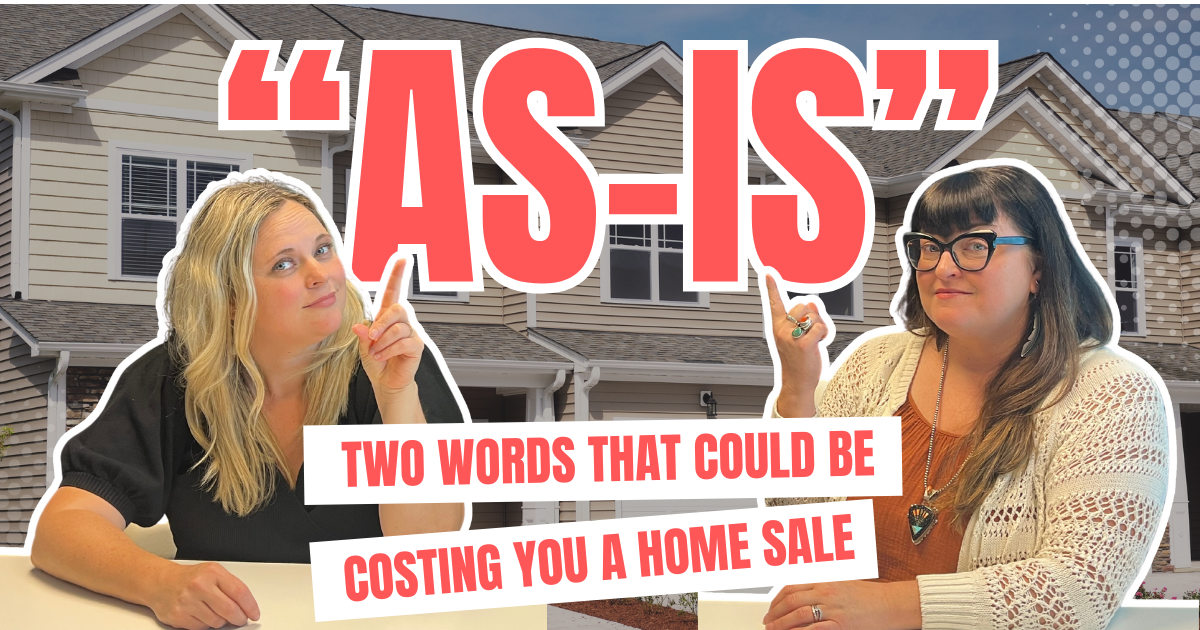As the real estate market continues to shift, more and more homeowners are asking a common question: “Can I sell my house as-is?” The short answer is yes — but whether or not you should depends on a number of important factors.
In a recent analysis of local listings, nearly half of them were labeled “as-is,” which signals a growing trend among sellers who want to avoid the time, hassle, and cost of repairs. While the idea of a no-fuss transaction may be appealing, selling a home “as-is” comes with both benefits and risks. Here’s what homeowners need to consider before going that route.
What Does “As-Is” Actually Mean?
Listing a home “as-is” means the seller is disclosing upfront that they do not plan to make any repairs — even if an inspection reveals issues. However, it doesn’t mean buyers lose their rights to inspect the property or negotiate. Most buyers will still include an inspection contingency and may walk away if major problems are discovered.
The reality is that an “as-is” label may not hold up during negotiations. A buyer may have every intention of accepting the home in its current condition, but once faced with a lengthy inspection report, their stance could quickly change.
How Buyers Interpret “As-Is”
To many buyers, the term “as-is” can be a red flag. It often implies that the home has significant issues or that the seller may be difficult to work with. This can deter serious buyers from scheduling a showing, even if the home doesn’t actually need major work.
In many cases, sellers are simply trying to avoid minor repair negotiations — which is understandable. But unfortunately, the “as-is” label can work against them by reducing showings, interest, and offers. Unless a property is truly in disrepair or facing a specific financial constraint, it’s often best to leave the “as-is” language out of public remarks and allow for more buyer flexibility.
Pricing and Positioning Matter
If a homeowner truly doesn’t want to do repairs, they must ensure the price reflects the home’s condition. Simply slapping on a lower list price doesn’t guarantee offers — especially if buyers still perceive the home as overpriced for what they’re getting.
Sellers who say, “I’ve already dropped the price, take it or leave it,” may still struggle if the pricing doesn’t align with buyer expectations. Today’s market is no longer skewed heavily toward sellers. It’s more balanced, and pricing strategy plays a critical role in getting attention and offers. Marketing a home as-is and overpricing it is a recipe for disappointment.
What Happens Once You’re Under Contract?
Many sellers believe that by marketing as-is, they’ve removed themselves from the repair conversation entirely. But once under contract, emotions shift. Faced with a large inspection report and a buyer ready to walk, sellers often find themselves renegotiating — even after insisting they wouldn’t.
In the ultra-competitive, low-interest-rate market of the past few years, buyers were more willing to take on repairs. But with today’s higher borrowing costs, buyers are more cautious and less likely to absorb unexpected expenses.
When Selling As-Is Does Make Sense
There are legitimate scenarios where selling as-is is the right move:
Major Fixers: If the home requires extensive renovation and is being marketed to investors or flippers at a discounted price, selling as-is makes sense.
Financial Hardship: In situations like short sales or when a homeowner has no equity to cover repairs, it’s appropriate to disclose upfront that no repairs will be made.
These are valid cases, but they represent exceptions rather than the norm. Most homeowners are better served by avoiding the as-is label and keeping some flexibility in their approach.
The Bottom Line
Selling a home as-is can work — but it should be a strategic decision, not a default. For most homeowners, positioning the property thoughtfully, pricing it correctly, and being prepared for negotiations will result in more interest and stronger offers.
Ultimately, the goal is to attract the largest pool of qualified buyers. Overusing the “as-is” label can reduce that pool and cost sellers valuable opportunities. A real estate professional can help evaluate the home’s condition, current market dynamics, and seller motivation to build a plan that works.
In today’s nuanced market, the right strategy makes all the difference.
Join Angela and Michele on this week's market update video!


